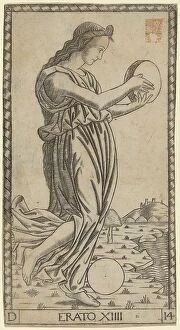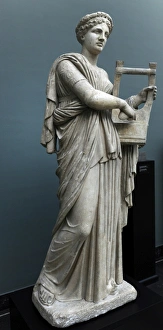Erato Collection
Erato, the Muse of lyric poetry and love songs, has been a source of inspiration for artists throughout history
All Professionally Made to Order for Quick Shipping
Erato, the Muse of lyric poetry and love songs, has been a source of inspiration for artists throughout history. In Roman mosaics dating back to the 3rd-4th century AD, we see her depicted alongside her fellow Muses, such as Thalia, in their divine glory. These intricate works of art found in places like Torre de Palm transport us to a time when creativity was revered and celebrated. Greek mythology tells us that Erato was one of the nine Muses who resided on Mount Olympus. Alongside her sisters Melpomene and Terpsichore, she embodied different forms of artistic expression. A statue from ancient Greece shows Erato gracefully playing the zither, captivating audiences with her melodic tunes. In Renaissance frescoes like Parnassus by Raphael in the Stanza della Segnatura, Erato is immortalized among other mythical figures. This depiction emphasizes how deeply intertwined poetry and music were considered during this era. The influence continued into later centuries as well. The series Twelve Muses and Goddesses by Leon Davent showcases an enchanting portrayal of this muse's beauty and grace. Her presence adds elegance to each piece. Even beyond visual arts, Erato's impact can be seen in literature too. In bas-reliefs like The Apotheosis of Homer by Archelaus of Priene or engravings found at the British Museum or through intaglios (engravings), she is often depicted alongside famous poets or writers who sought inspiration from her divine essence. Erato's significance extends beyond mere representation; she symbolizes the power that art holds over our emotions and desires. As shown in coloured engravings depicting Divinities of Greeks and Romans or even modern interpretations like Celebrities in the Guise of Gods and Muses - Anrep Mosaic – where famous individuals are portrayed as gods – it becomes evident that Erato's influence transcends time and culture.















































